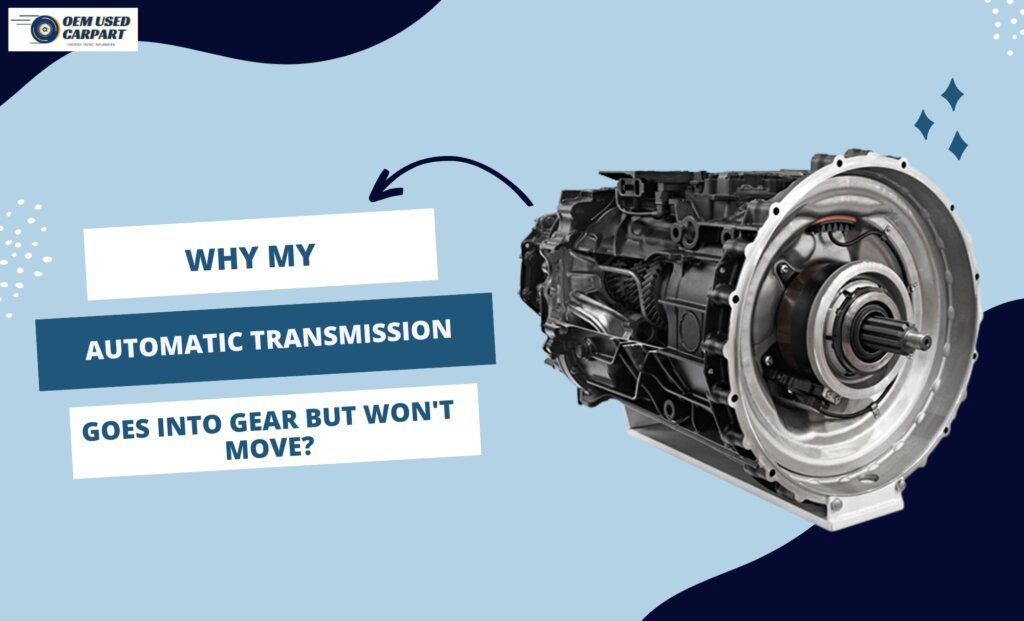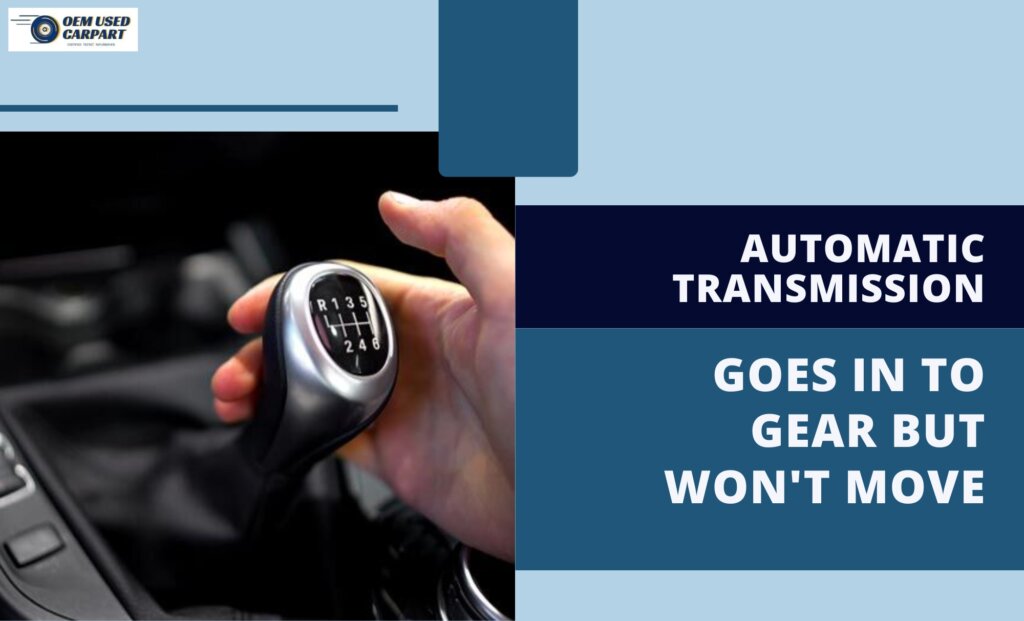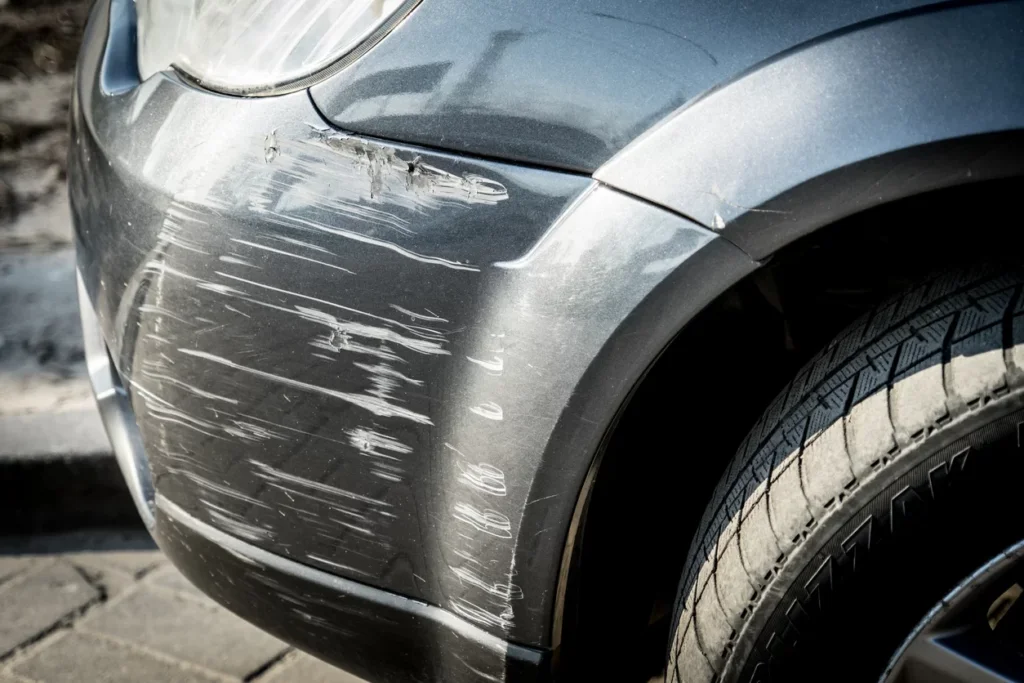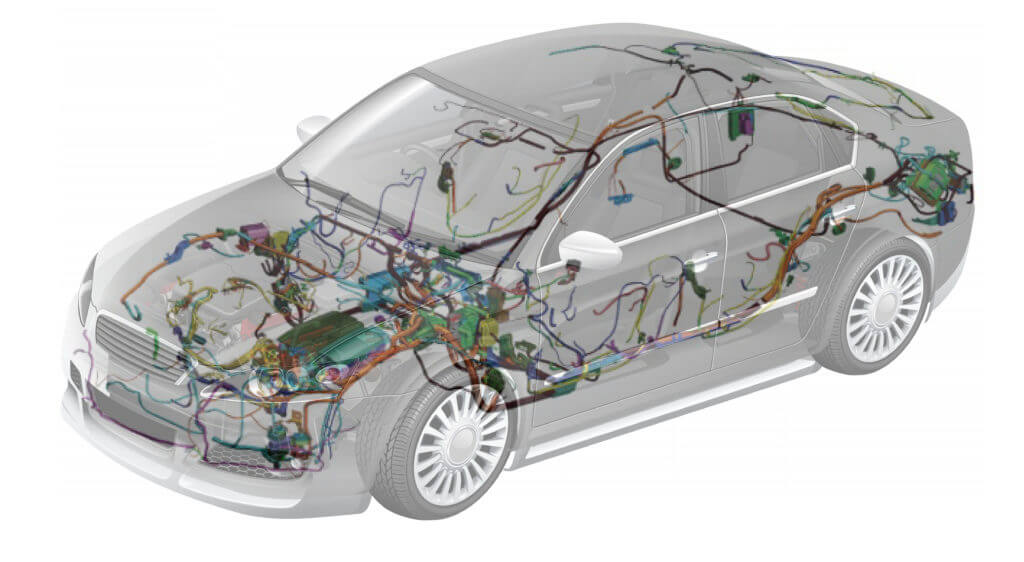Almost any car may experience transmission problems. Harsh driving can cause your transmission to degrade more quickly. So, whether your car has an automatic or manual transmission, both are prone to problems. Unfortunately, automatic transmission cars are more prone to issues than manual transmission cars. When you put your automatic transmission into gear but won’t move, you might have a serious transmission issue.
So, if your vehicle is not shifting or loses power whenever you shift into gear, then it is time to diagnose the car. We will discuss the major reasons why your automatic transmission is facing this issue.
Why My Automatic Transmission Goes into Gear but Won’t Move?

When you put your car’s automatic transmission into gear but it won’t move and remains stuck in park mode. Then you may feel an urgency and try to shift by using your muscles. It will be a mistake if you continue to push your gears. It will further damage your automatic transmission. The transmission will typically enter emergency mode, and your dashboard will likely display several error codes.
There can be multiple reasons behind your car going into gear but not moving. We will discuss each problem one by one.
Leaking Transmission Fluid
In most automatic transmissions, the fluid capacity is 8 to 16 quarts. When there is a leakage of two or more quarts, then the transmission system is not able to maintain the hydraulic pressure for functioning. When there is transmission fluid leakage, it can create trouble for your car. It is the most common problem. If your car is leaking transmission liquid, then you won’t be able to change gear and move it.
You can check the transmission fluid through the dipstick and fill it up as per need.
Defective Automatic Transmission Valve
A defective automatic transmission valve body is another cause of your car’s inability to move in any gear. The automatic transmission valve body is made up of valves, solenoids, and passageways. When the shift solenoid’s function, fluid flows through hydraulic channels in the transmission’s valve body. The filthy transmission fluid containing particles and debris clogs the passages in the valve body. Thus, it could prevent your automobile from moving in any gear by interfering with the transmission of electricity from the gear system to other car components.
Bad Shift Solenoid
Your car may not shift into gear if the control solenoids in the automatic transmission valve body malfunction. In the valve body, you can find the pressure and shift control solenoids. The pressure control solenoid maintains the valve body’s oil pressure at the desired level. Thus, to maintain the oil flow through the channels in the valve and helps in gear shifting, the shift control solenoids open and close.
Due to continuous stuck closing and opening, the control solenoid degrades. Therefore, it impacts gear shifting by disrupting the transmission fluid’s flow through valve body channels, ultimately causing the problem of the car not moving in any gear.
Clogging of Transmission Filter
The transmission filter is in charge of preventing harmful particles from entering the transmission. If you don’t replace the filter, pollutants and debris will collect inside and obstruct the transmission filter.
If your car is heating up and the automatic transmission goes into gear but won’t move, then you may be dealing with a blocked filter. In case you are able to drive for a short distance before coming to a halt, then it indicates that your transmission is wearing.
Generally speaking, you should change the transmission every 300,000 miles or every two years. If you are tight on budget, then you can buy the best used transmission.
Failing of Torque Converter
If you do not maintain the torque converter of your car, then it can ultimately affect your transmission. Due to excessive friction, your torque converter may fail. The reason behind it can be the wearing of needle bearing. If your automatic transmission goes into gear but won’t move, then the torque converter can be the culprit. The following are the primary reasons for the failure of the torque converter.
- The transmission is slipping out of gear.
- The gear won’t shift.
- High stall speeds.
- Polluted transmission fluid.
- Overheating of transmission.
Wearing of Clutches
An automatic transmission has clutches. The automatic car won’t move if the clutches are worn out. Due to bad clutches, the external components in your AMT that connects to the engine may also degrade. Since they connect the transmission to the engine, their malfunctioning can be problematic.
Other symptoms of the failing clutch are:
- Unable to change to the third gear.
- The automobile won’t be able to go in reverse gear.
- You will hear blows while changing gears.
Locked Shifter
If your car has an automatic transmission, it comes with a locked shifter. It won’t allow you to shift out of the park mode until it detects that the driver is in the seat and the brake pedal is down. However, if this component breaks out, you might not be able to change gears at all. However, you can override the shift lock in AMT.
Faulty Transmission Control Unit
When your TCU is malfunctioning, it will indicate wrong gear inputs. Even when the RPMs are increasing, you will face difficulty in shifting gears due to a faulty transmission control unit.
However, you should check the battery as it may lack in supply of power, causing the system to not function properly. If that isn’t the issue, you might need a new transmission control unit.
How to Diagnose Your Automatic Transmission?
Here are the quick checks that you should perform to find out the problems in your automatic transmission.
- Start by examining the transmission oil’s condition. Change the transmission oil and filter if they are both unclean.
- If the transmission oil is in good condition but has a low level, then top it off. Additionally, you must look for leaks.
- Moreover, you should check filter clogging. If it is clogged, then you should change the transmission fluid and filter.
- Verify that the gear shifter’s position corresponds to the position of the gears on the dashboard.
- Inspect your transmission system’s solenoids and valve bodies.
- Use an OBD2 scanner to read the transmission control module’s error codes.
- If your car’s automatic transmission goes into gear but won’t move, then also check the battery. The PCM won’t operate due to low power.
Frequently Asked Questions
When you regularly take automatic transmission services and clean the filter and oils, then your AMT can last for 300,000 miles and more. However, when you drive rough and also do not go for regular maintenance, then it will last for less than 100,000 miles.
The transmission fluid in an automatic car acts as a link between the gearbox’s gears and the engine’s output. It offers good lubrication. Without fluid, there would be no hold, which would prevent the gears from rotating and preventing the car from moving.
The data provided by the Transmission Position Sensor to the ECU affects the shifting of transmission. Due to faulty TPS, you will experience slipping out of gear, incorrect gear selection, or a lack of upshifts.
● The following are some symptoms that your automatic gearbox is failing:
● Dealy in gear shifting.
● Grinding noises while shifting.
● Transmission fluid leakage.
● Burning smell.
● Check engine light is ON.













